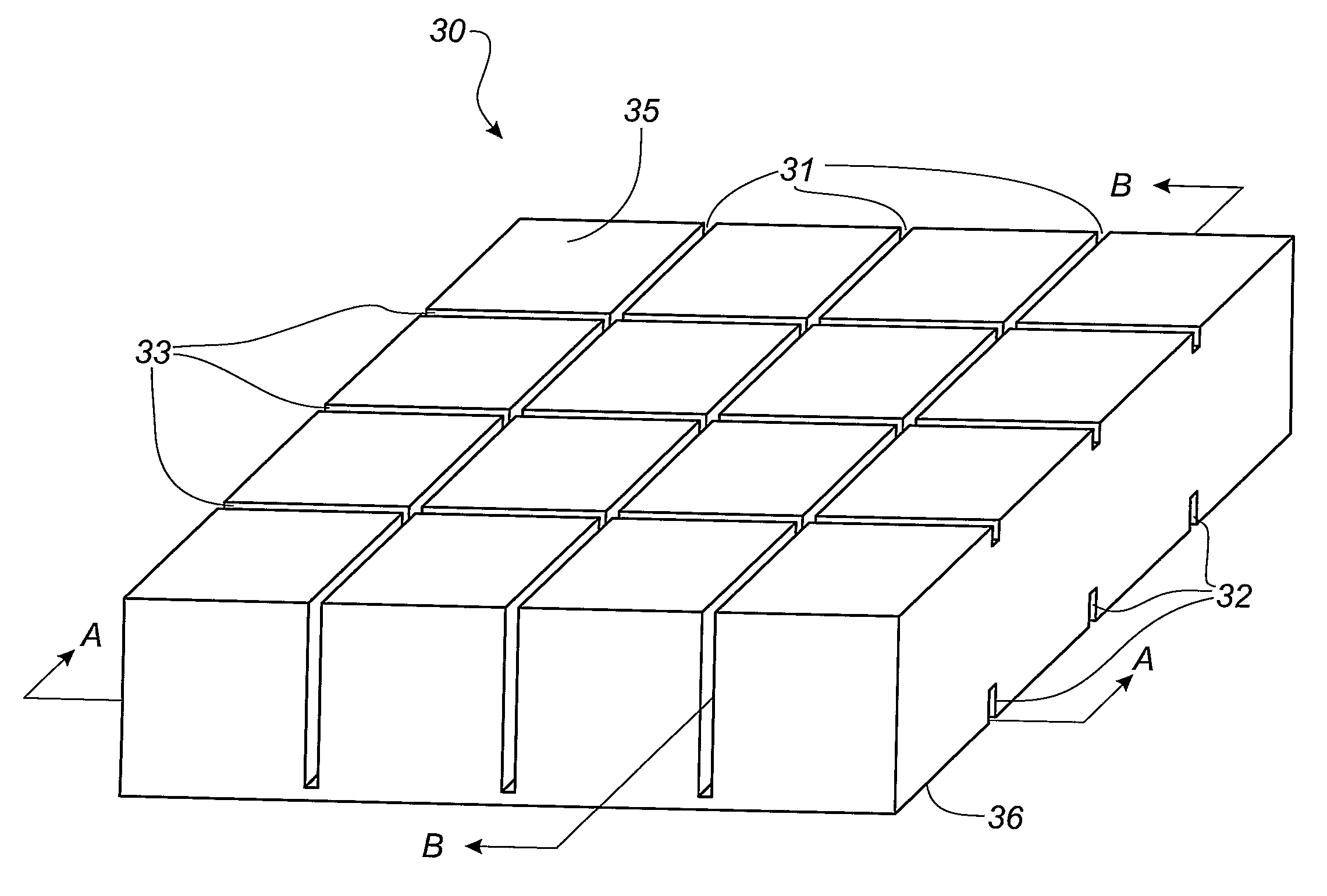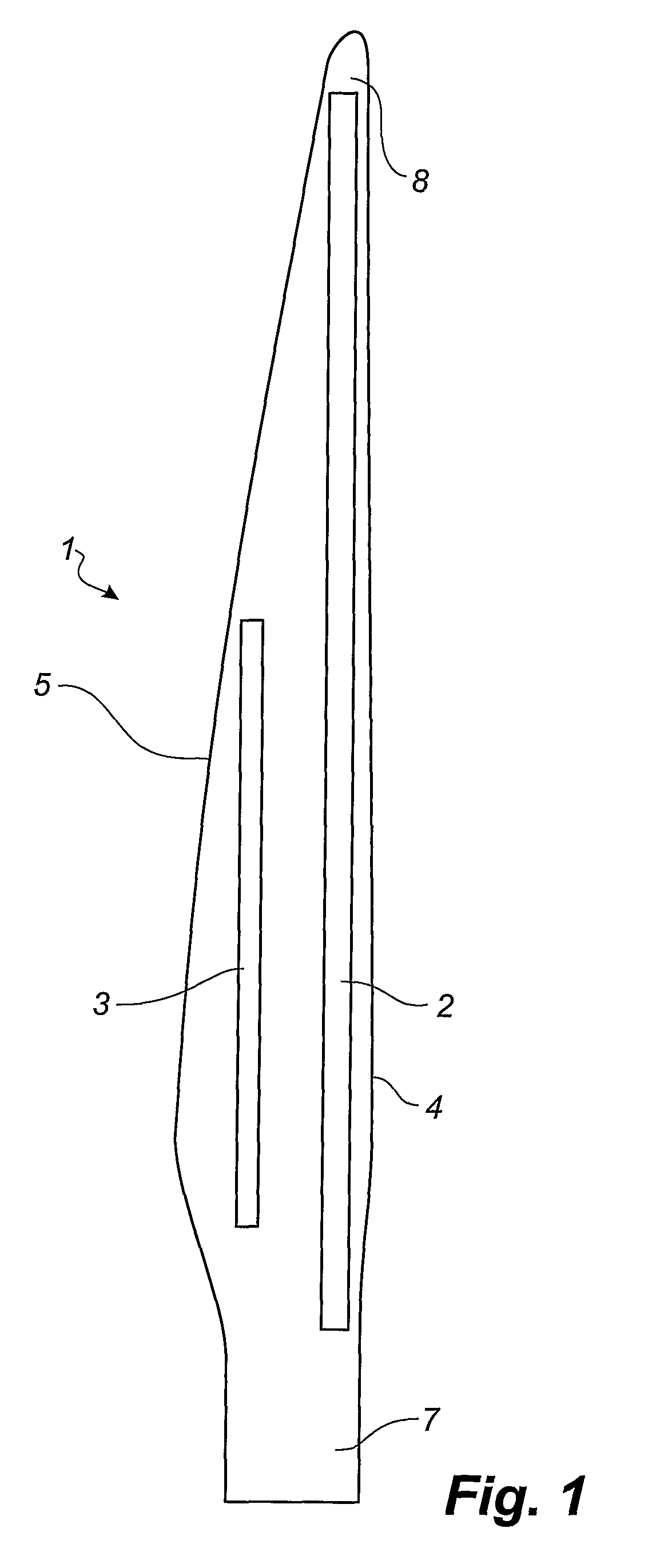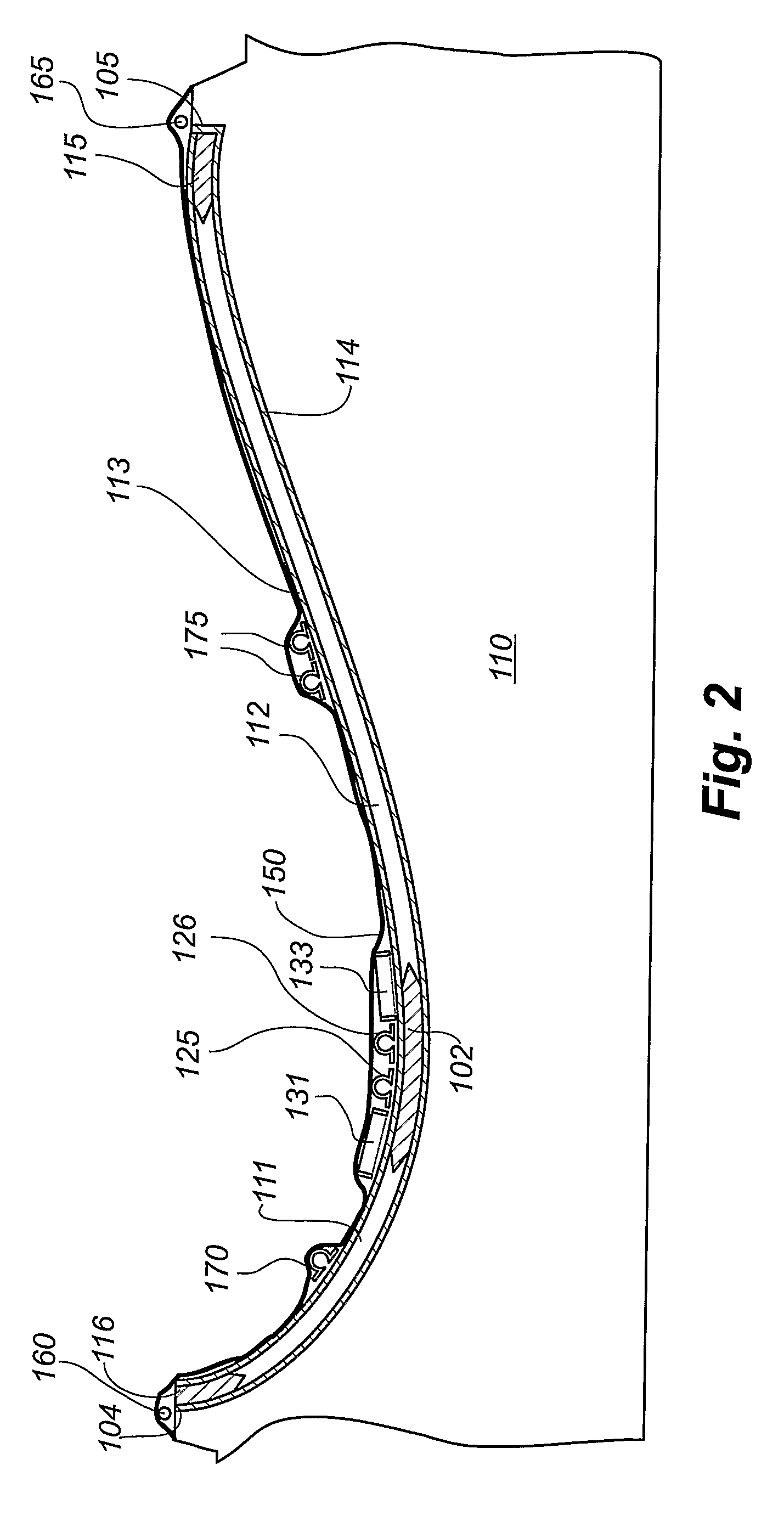Method of Using a Formable Core Block for a Resin Impregnation Process
a technology of resin impregnation and core block, which is applied in the direction of application, lamination, domestic articles, etc., can solve the problems of air pockets, difficult or impossible removal, and ensuring the complete distribution of polymer in the entire mould cavity, and achieve the effect of easy removal
- Summary
- Abstract
- Description
- Claims
- Application Information
AI Technical Summary
Benefits of technology
Problems solved by technology
Method used
Image
Examples
example
[0099]According to a given prototype of a LM61.5 wind turbine blade, the width of the main laminate differs in the longitudinal direction of the blade. The main laminate is approximately 850 mm wide and has a thickness of approx. 42 mm at the widest and thickest part, respectively. The width of the top hat also varies in the longitudinal direction of the blade and is approximately 360-370 mm at the widest part and 150 mm at the slimmest part.
[0100]The core blocks have the following dimensions: w=1-1.2 mm, d=30 mm, h2=2.5+ / −0.5 mm, α=14 degrees, and t=1 mm. The core blocks have varying thickness h, and therefore the height of the first grooves is also varying. The overlap between the first grooves and the second grooves are equal to h2 minus t and is thereby 1.5-2.0 mm.
[0101]The examples have been described according to preferred embodiments. However, the invention is not limited to these embodiments. For example, the width and height of the individual grooves as well as the distance...
PUM
| Property | Measurement | Unit |
|---|---|---|
| distance | aaaaa | aaaaa |
| distance | aaaaa | aaaaa |
| distance | aaaaa | aaaaa |
Abstract
Description
Claims
Application Information
 Login to View More
Login to View More - R&D
- Intellectual Property
- Life Sciences
- Materials
- Tech Scout
- Unparalleled Data Quality
- Higher Quality Content
- 60% Fewer Hallucinations
Browse by: Latest US Patents, China's latest patents, Technical Efficacy Thesaurus, Application Domain, Technology Topic, Popular Technical Reports.
© 2025 PatSnap. All rights reserved.Legal|Privacy policy|Modern Slavery Act Transparency Statement|Sitemap|About US| Contact US: help@patsnap.com



